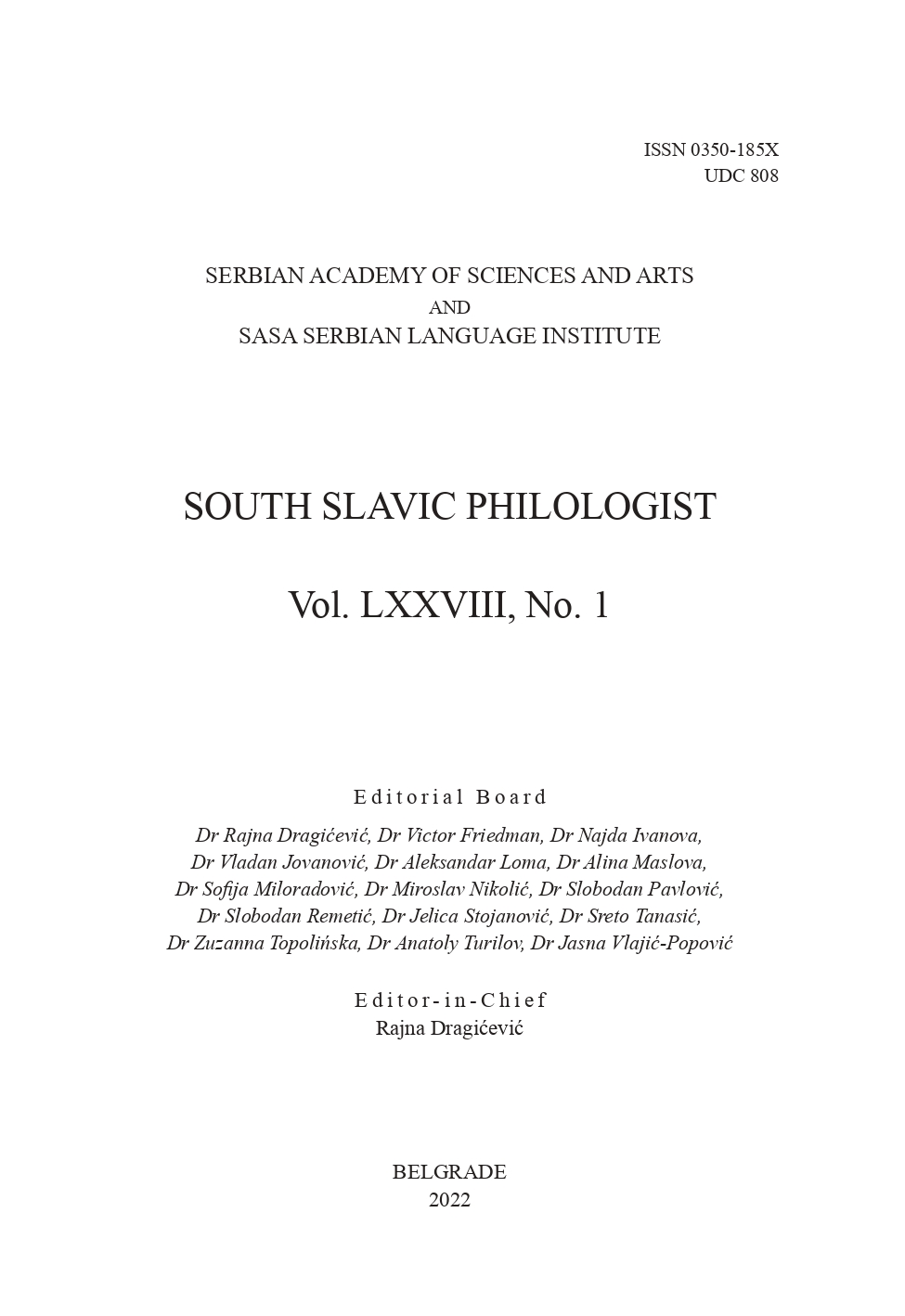O ТРАНСКАТЕГОРИЗАЦИЈИ И ПСЕУДОТРАНСКАТЕГОРИЗАЦИЈИ У ДОМЕНУ ПРОСТОРА
ABOUT TRANSCATEGORISATION AND PSEUDOTRANSCATEGORISATION IN THE DOMAIN SPACE
Author(s): Gordana R. ŠtasniSubject(s): Language studies, Semantics
Published by: Институт за српски језик Српске академије наука и уметности
Keywords: space; fuzzy linguistics; monosemy; bisemy; polysemy; continuity; transcategorisation; pseudotranscategorisation; Serbian language.
Summary/Abstract: This paper deals with the phenomenon of semantic dispersion and semantic structure based on continuity (graduality, scalability) and transcategorisation, with the introduction of a new term ‘pseudotranscategorisation’. The aim of this research is to create a functional methodological procedure in order to examine the observed semantic phenomenon in the spirit of fuzzy linguistics. The proposed methodological procedure was applied to the examples of nouns of the nomina loci type, which formalize space as one of the basic ontological categories. The principle of continuity is reflected in the creation of a phase scale whose poles are monosemy and polysemy, while the role of the connective component in the observed semantic continuum belongs to the two-meaning semantic structure of lexemes. From the point of view of transcategorisation, one-meaning nomina loci with a phytonym as a motive word were first considered, in the context of the semantic-derivational nest to which they belong. The other derivatives in the nest are indicators of potential conceptual domains that can be developed from the category of space, which are to appear as secondary realisations in two-meaning derivatives with the same motivator. The analysis of two-meaning words and polysemous lexemes is conducted in a reduced context and includes their semantic structure. If the secondary realisations and conceptual domains to which they belong have been created under the infl uence of the mechanisms of semantic transformations, then the observed phenomenon is defined as transcategorisation – partial, by means of the model PR SPACE → SR SPACE (žitnjak), or complete, which indicates the ability of a particular lexeme to achieve categorically different realisations. In this case, the relation between the categories is mostly logical as a consequence of metonymy transfer, as in the model PR SPACE → SR ANIMAL (koprivac, koprivnjak). If secondary realizations occur by repetition of the derivative model, then it is a matter of pseudotranscategorisation, as in the models PR SPACE → SR OBJECT (bukvik, konopljik) and PR SPACE → SR DRINK (dudara). In this case, the semantic relation of primary and secondary realisation with the motive word is established through metonymy. Polysemy has not developed in derivatives with a phytonymic motivator and those with the primary spatial meaning. In the realized polysemous structure of the lexeme voćar, secondary meanings are created by repeating the derivative model, and their feature is pseudotranscategorisation.
Journal: Јужнословенски филолог
- Issue Year: 78/2022
- Issue No: 1
- Page Range: 121-145
- Page Count: 25
- Language: Serbian

